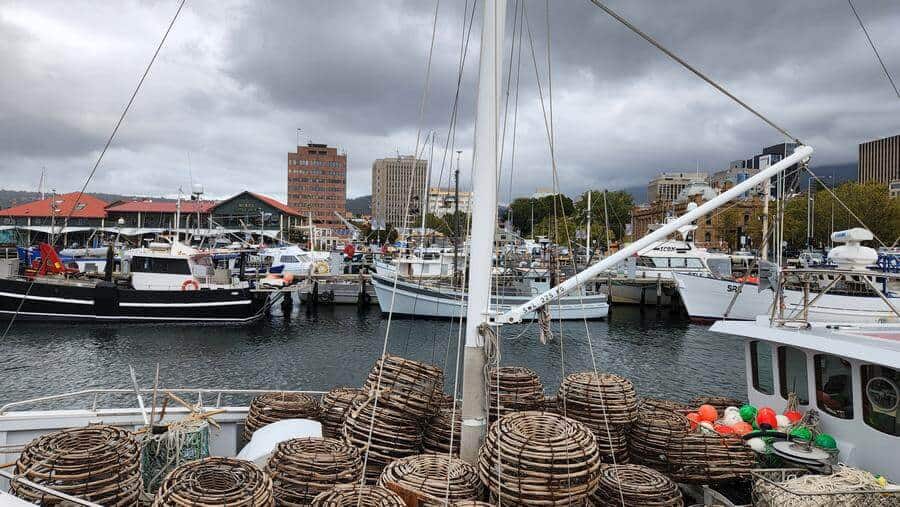Spearfishing is popular in Tasmania, and one well-known target for spearfishers is the crayfish or rock lobster. Found in abundance around Tasmania, these delicious crustaceans can be a tasty addition to any meal. However, before you go out and start spearing crayfish, there are a few things you need to know.
You cannot spear crayfish in Tasmania, as doing so is illegal. Crayfish are a protected species in Tasmania, and there are strict regulations to ensure their numbers remain healthy. You can only take rock lobster using a gloved hand, recreational cray pot, cauves, or hoop nets.
This detailed article outlines everything you need to know about spearfishing for crayfish in Tasmania, including why it’s prohibited, licensing, crayfish gear, and bag limits.
Why Spearfishing Crayfish In Tasmania Is Illegal
Rock lobster is classified as ‘vulnerable’ by the International Union for Conservation of Nature (IUCN), which means it is at risk of becoming extinct in the wild. Their high sensitivity to climate change
The Tasmanian government has put in place several regulations to protect rock lobster populations, including banning spearfishing. These regulations are necessary to help ensure that rock lobster populations remain healthy and can continue to be enjoyed by future generations.
Spearfishing causes unnecessary stress on rock lobster populations and can harm their long-term health and wellbeing.
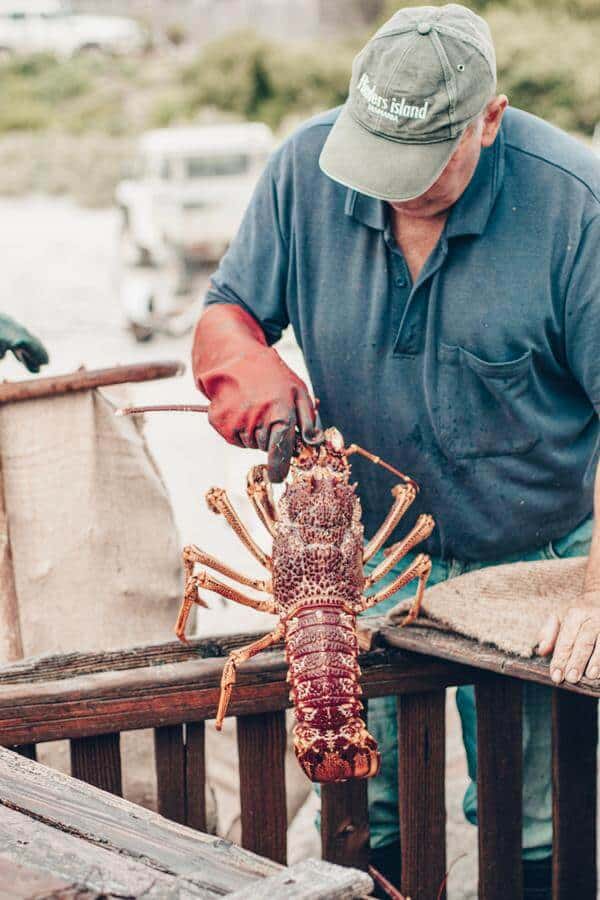
Crayfish Hunting Rules In Tasmania
A trip to Tasmania isn’t complete without indulging in some of the amazing seafood on offer, and there’s no denying that crayfish is a Tasmanian delicacy. While spearfishing crayfish is illegal, there are still some ways that you can enjoy these delicious crustaceans.
Hunting crayfish using a gloved hand, recreational cray pots, cauves, or hoop nets is perfectly legal and means that you can still enjoy this popular seafood without breaking the law. However, there are some strict rules you must follow
- Possess a current recreational sea fishing license: You can’t hunt crayfish in Tasmanian waters without a current recreational sea fishing license from the Department of Natural Resources and Environment Tasmania (DNRET
). You must carry this license with you when hunting in Tasmanian waters. To get a license, you must be ten years or older. A special rock lobster license is valid for one year.
- Recreational fishing seasons: The legal recreational fishing season for crayfish in Tasmania varies depending on the zone in which you are fishing. The DNRET updates the fishing season dates each year, so make sure you check before you go. They may also close fisheries at spawning times to protect breeding stock and may be closed for public health reasons.
- Crayfish gear: Due to the delicate nature of their claws, it is illegal to use any mechanical device to harvest crayfish in Tasmania. This includes devices such as traps, nets, and hooks. You can only use your gloved hand, a cray pot, cauf, or hoop net to harvest crayfish. Spearing, shooting, and using chemicals to harvest crayfish is also illegal.
- Size: The size and bag limit for crayfish in Tasmania varies depending on the zone where you’re fishing. In the North West Zone, a male crayfish should have a minimum size of 110 mm (4.33 in), while a female should be 120 mm (4.72 in). A male should measure 110 mm (4.33 in) and a female 105 mm (4.13 in) for other waters.
- Bag limits: Like crayfish size, the bag limit also varies by region. For example, the bag limit for the Eastern Region is two. It’s five for the Western Region and two for Northern Bass Strait Islands.
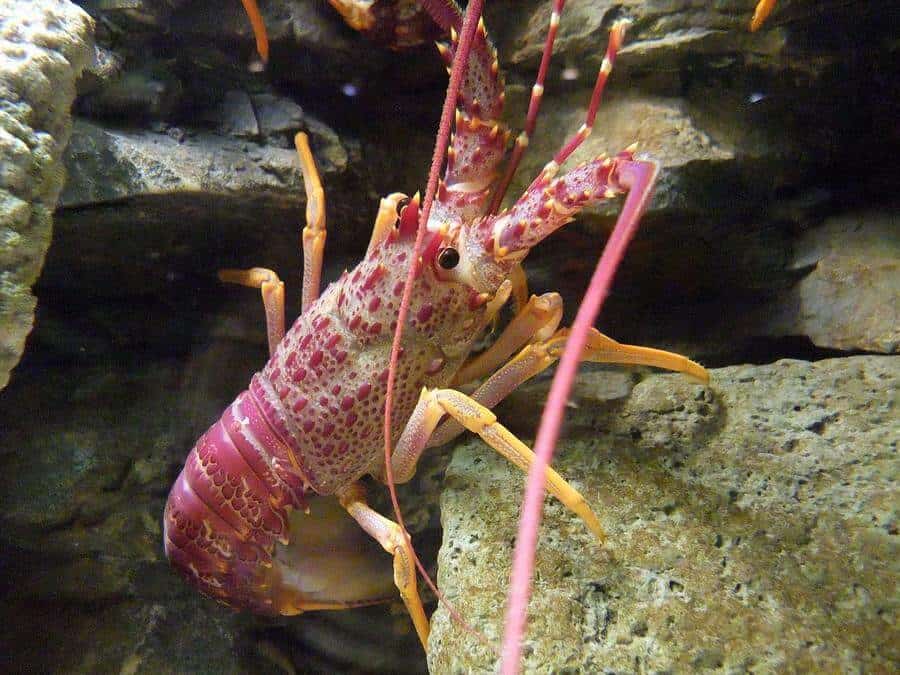
Catching Crayfish In Tasmania
There are several legal methods you can use
You can use the following methods to catch crayfish in Tasmania:
Crayfish Pots
Rock lobster pots are the most common method of catching crayfish in Tasmania. They are made from wire mesh and have a conical or cylindrical shape. The pot must satisfy the following requirements:
- There should be no obstruction in the opening through bait sticks or other objects.
- The base shouldn’t be larger than 1250×1250 mm (49.21×49.21 in) and no more than 750 mm (29.53 in) high.
- Escape gates must be at least 57 mm (2.24 in) high, and the lower inner edge shouldn’t exceed 150 mm (5.91 in) from the bottom of the pot.
- The hole in the middle must be large enough to allow a 200 mm (7.87 in) diameter buoy to pass through without touching the sides.
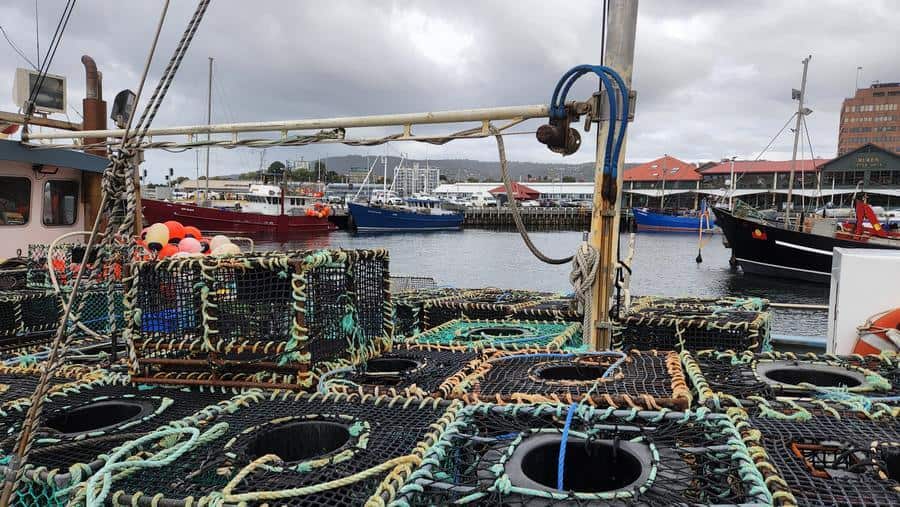
Rings Used For Catching Crayfish
Rings, also called hoop nets, have a cylindrical shape and are made from wire mesh. You must have an up-to-date license to possess and use a hoop net in the state waters. There are some specific requirements that the ring must satisfy:
- It must be a single hoop not exceeding 1 meter (3.28 ft) in diameter and must be covered with wire mesh.
- It must have a buoy attached to it and be marked with the license number in case it’s left unattended.
Crayfish Caufs
A cauf is designed to hold crayfish in the water and keep them alive. It must be marked with a yellow buoy and the user’s license number. Requirements for using a cauf include:
- You can only use one cauf at a time.
- Sharing cauves is allowed, but crayfish in a shared cauf must be separated from other anglers and held in their own compartments.
- All caught crayfish must be tail clipped and shouldn’t exceed the possession limit.
How To Identify Crayfish In Tasmanian Waters
There are two species of rock lobster found in Tasmanian waters, the Southern Rock Lobster (Jasus Edwardsii) and the Eastern Rock Lobster (Jasus Verreauxi). They are large crustaceans, orange-red in colour, with long antennae and large claws.
Crayfish have a rough-textured shell, tough carapace, eyes on moving stalks, and five pairs of walking legs. A distinctive feature about them is their six small limbs around the mouth and a segmented tail ending in a fan with small swimmerets.
Crayfish are fragile creatures and can easily die when left exposed to warm and dry air. They also have sharp spines around their antennae, so be careful when handling them.
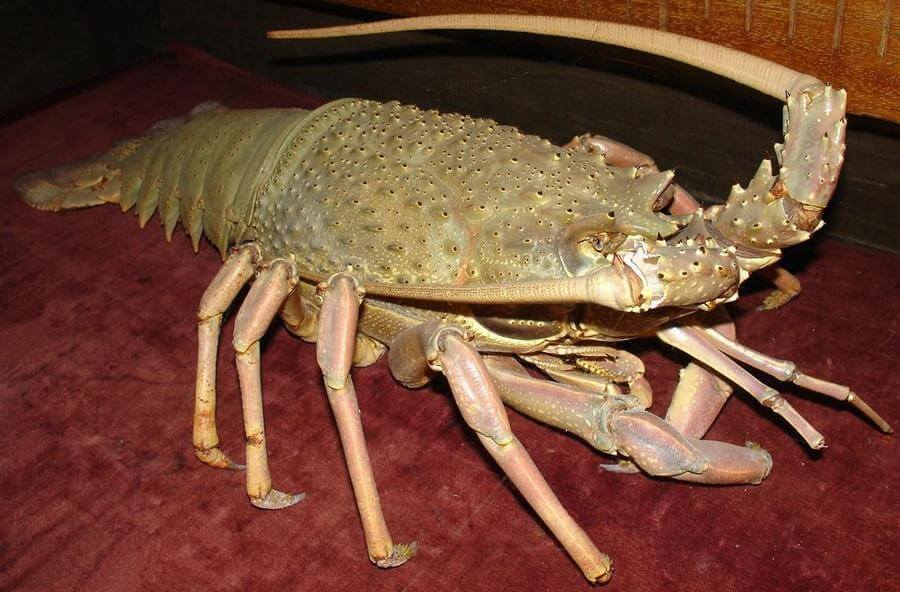
Final Thoughts
While crayfish are a delicious and popular seafood, it’s essential to be aware of the regulations to ensure sustainable fishing practices and avoid fines. Spearfishing in Tasmania is prohibited as it is considered an inhumane way to kill the animal.
Using pots, rings, and cauves are the only legal methods for catching crayfish. Be sure to check the size and bag limits in place, as they vary depending on the zone in which you are fishing. With some preparation, you can enjoy a fun and delicious day out crayfishing in Tasmania.
Resource Links To Products We Use And Recommend
More Pages On Other Areas
There’s been a steady rise in interest in cruise ships worldwide. With everyone wanting to see what all the chatter’s about, many are first-timers. So, if you’re one of those individuals and...
There are always risks where there is money involved, and renting a car is no exception. Even though you are only paying for a car temporarily, you should always be aware of the risks before handing...


